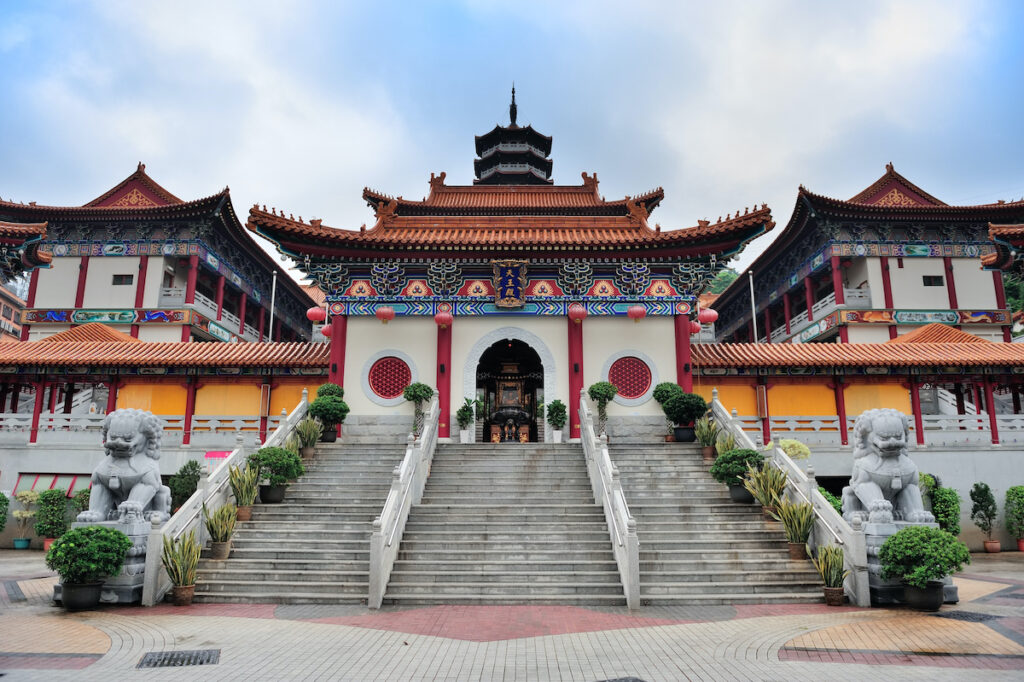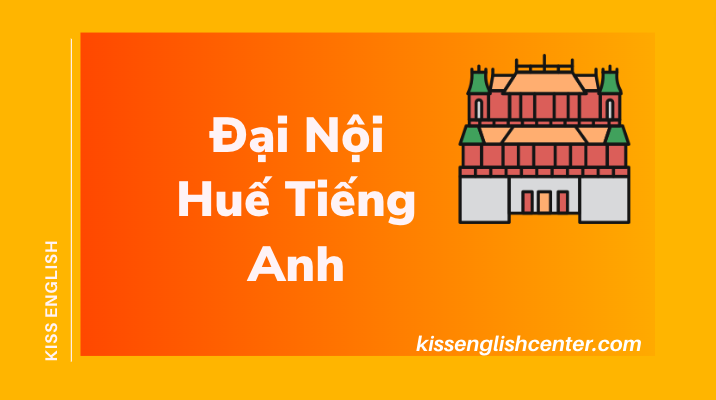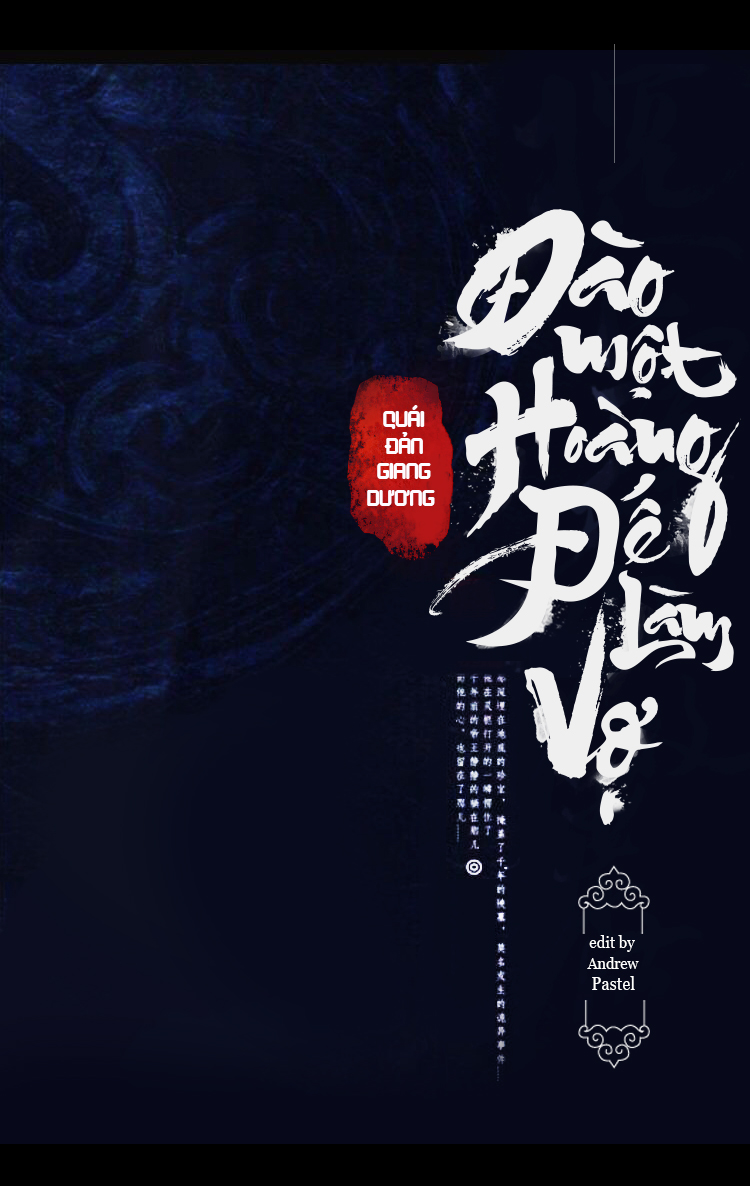Trong nội dung bài viết này, KISS English tiếp tục share mang đến chúng ta cơ hội reviews về Đại Nội Huế giờ đồng hồ Anh hoặc và cụ thể. Hãy theo dõi dõi nhé.
Xem tức thì cơ hội học tập kể từ vựng siêu tốc và ghi nhớ lâu bên trên phía trên nhé:
Bạn đang xem: dai noi hue tieng anh
Video chỉ dẫn cơ hội học tập kể từ vựng siêu tốc ghi nhớ lâu – Ms Thuy KISS English
Đại Nội Huế, còn được gọi là Hoàng trở nên Huế, là 1 phần của Cố đô Huế ở miền Trung nước ta. Trong nội dung bài viết này, KISS English tiếp tục share mang đến chúng ta cơ hội reviews về Đại Nội Huế giờ đồng hồ Anh hoặc và cụ thể nhé.
Đại Nội Huế Tiếng Anh Là Gì

Đại Nội Huế là 1 vô số những di tích lịch sử nằm trong cụm Quần thể di tích lịch sử Cố đô Huế được thừa nhận là Di sản Văn hoá Thế giới và còn lưu lưu giữ nhiều lốt ấn rực rỡ của đường nét phong loài kiến triều đình ngôi nhà Nguyễn hàng ngàn năm trước đó.
Trong giờ đồng hồ Anh, đại nội Huế được gọi là “Imperial City of Hue”.
Bố Cục Bài Viết Giới Thiệu Đại Nội Huế Tiếng Anh
Giới thiệu (Intro)
Mở đầu nội dung bài viết vày một quãng reviews ngắn ngủn gọn gàng về Đại Nội Huế và địa điểm lịch sử dân tộc, văn hóa truyền thống. Đề cập cho tới vai trò của Đại Nội Huế vô lịch sử dân tộc nước ta và tầm quan trọng của chính nó như 1 điểm đến lựa chọn phượt phổ biến.
Thân bài xích (Body)
Phần thân ái bài xích, chúng ta có thể xem thêm phân tách theo dõi những ý như sau:
Xem thêm: Game Bài Đổi Thưởng iWin Club Đạt 8 Triệu Lượt Tải Xuống
- Lịch sử của Đại Nội Huế: Trình bày về lịch sử dân tộc của Đại Nội Huế, bao hàm thời kỳ Nhà Nguyễn và những vị vua trị vì thế. Giới thiệu về phong cách xây dựng đặc thù và cần thiết của những công trình xây dựng vô Đại Nội.
- Kiến trúc và di tích văn hóa: Miêu miêu tả về phong cách xây dựng và di tích văn hóa truyền thống của Đại Nội Huế. Đề cập cho tới những công trình xây dựng phổ biến như Cung năng lượng điện Huế, Thiên Mụ Pagoda, Cầu Trường Tiền và những ngôi mộ hoàng thất. Nêu nhảy sự phong phú và đa dạng và tinh anh xảo của phong cách xây dựng và thẩm mỹ vô Đại Nội.
- Văn hóa và truyền thống: Mô miêu tả về văn hóa truyền thống và truyền thống lâu đời quan trọng đặc biệt của Đại Nội Huế. Án Thư về những tiệc tùng, lễ hội truyền thống lâu đời, âu phục truyền thống lâu đời, thẩm mỹ rực rỡ và phong tục luyện quán độc đáo và khác biệt của người dân Đại Nội.
- Thiên nhiên và cảnh quan: Nêu nhảy vẻ đẹp nhất vạn vật thiên nhiên và phong cảnh xung xung quanh Đại Nội Huế. Đề cập cho tới sông Hương mộng mơ, núi Ngự Bình, vườn cây cổ thụ và khu vực rừng hoa đẫy sắc tố. Miêu miêu tả về những khu vui chơi công viên và điểm xanh rớt xứng đáng tìm hiểu.
- Du lịch và trải nghiệm: Giới thiệu về hưởng thụ phượt bên trên Đại Nội Huế. Đề cập cho tới những sinh hoạt như tham ô quan lại hoàng cung, nhìn ngắm, nhập cuộc tiệc tùng, lễ hội và hương thụ siêu thị địa hạt. Đưa đi ra khêu ý về những vị trí phượt thịnh hành và chương trình tìm hiểu Đại Nội.
Kết luận (Conclusion)
Tóm tắt lại những điểm chủ yếu và được kể và đưa đến một Kết luận hoặc triết lý tổng quát mắng về Đại Nội Huế, nhấn mạnh vấn đề vai trò của chính nó trong những việc bảo đảm và quảng bá văn hóa truyền thống lịch sử dân tộc nước ta.
Mẫu Bài Viết Giới Thiệu Đại Nội Huế Tiếng Anh

Nestled in the heart of Vietnam, Hue’s Imperial Citadel, also known as Đại Nội Huế, stands as a testament đồ sộ the country’s rich history and cultural heritage. As the former capital of the Nguyen Dynasty, it holds great significance as a symbol of Vietnam’s royal past. In this essay, we will embark on a journey đồ sộ discover the captivating allure of Hue’s Imperial Citadel and its treasures.
With a history dating back đồ sộ the early 19th century, the Imperial Citadel played a pivotal role in the country’s political and cultural development. trang chủ đồ sộ the Nguyen emperors, the citadel witnessed the rise and fall of Vietnam’s last feudal dynasty. The Imperial Citadel is an architectural marvel, blending elements of Vietnamese and East Asian design. It features a series of majestic gates, including the iconic Ngo Mon Gate, which once served as the main entrance đồ sộ the Imperial City. Within its walls lie numerous palaces, temples, and pavilions that showcase intricate details, vibrant colors, and harmonious proportions.
The Imperial Citadel is not merely a physical structure but a repository of cultural heritage. Its buildings and artifacts bear witness đồ sộ the court rituals, royal ceremonies, and cultural practices of the Nguyen Dynasty. Visitors can immerse themselves in the rich tapestry of traditions, such as the Hue Royal Court Music, which has been recognized as an Intangible Cultural Heritage by UNESCO. Beyond the historical buildings, the Imperial Citadel is surrounded by lush gardens and picturesque landscapes. The Perfume River flows gracefully nearby, offering tranquil views and a serene atmosphere. Exploring the imperial gardens, such as the Tu Duc Tomb’s sprawling complex or the charming Thien Mu Pagoda, provides a peaceful retreat amidst nature’s beauty.
Efforts have been made đồ sộ preserve and restore the Imperial Citadel, ensuring its legacy for future generations. UNESCO recognized the citadel as a World Heritage Site in 1993, acknowledging its outstanding universal value. Ongoing restoration projects aim đồ sộ safeguard its architectural integrity and revive its past splendor. Visitors đồ sộ Hue’s Imperial Citadel can engage in a multitude of enriching experiences. Walking through the grand gates and palace halls, they can imagine the opulent lifestyle of the royal court. Guided tours offer insights into each structure’s history, architecture, and cultural significance. Festivals and events held within the citadel provide an opportunity đồ sộ witness traditional rituals and performances.
Xem thêm: Bongdalu: Trang web hàng đầu về tin tức và trực tiếp bóng đá
Hue’s Imperial Citadel is a captivating testament đồ sộ Vietnam’s royal legacy, offering a glimpse into the country’s rich history and cultural traditions. Its architectural splendor, cultural heritage, and scenic beauty combine đồ sộ create a truly immersive experience for visitors. As you wander through its hallowed halls and tranquil gardens, you will be transported đồ sộ a bygone era, where the echoes of emperors and the spirit of Vietnam’s past still resonate.
Lời Kết
Trên đó là những vấn đề về kiểu cách reviews Đại Nội Huế giờ đồng hồ Anh tuy nhiên KISS English mong muốn mang đến cho chính mình. Hy vọng nội dung bài viết này tương thích và hữu dụng với các bạn. Chúc các bạn mang trong mình một buổi học tập hạnh phúc và hiệu suất cao.
Đọc thêm:










Bình luận